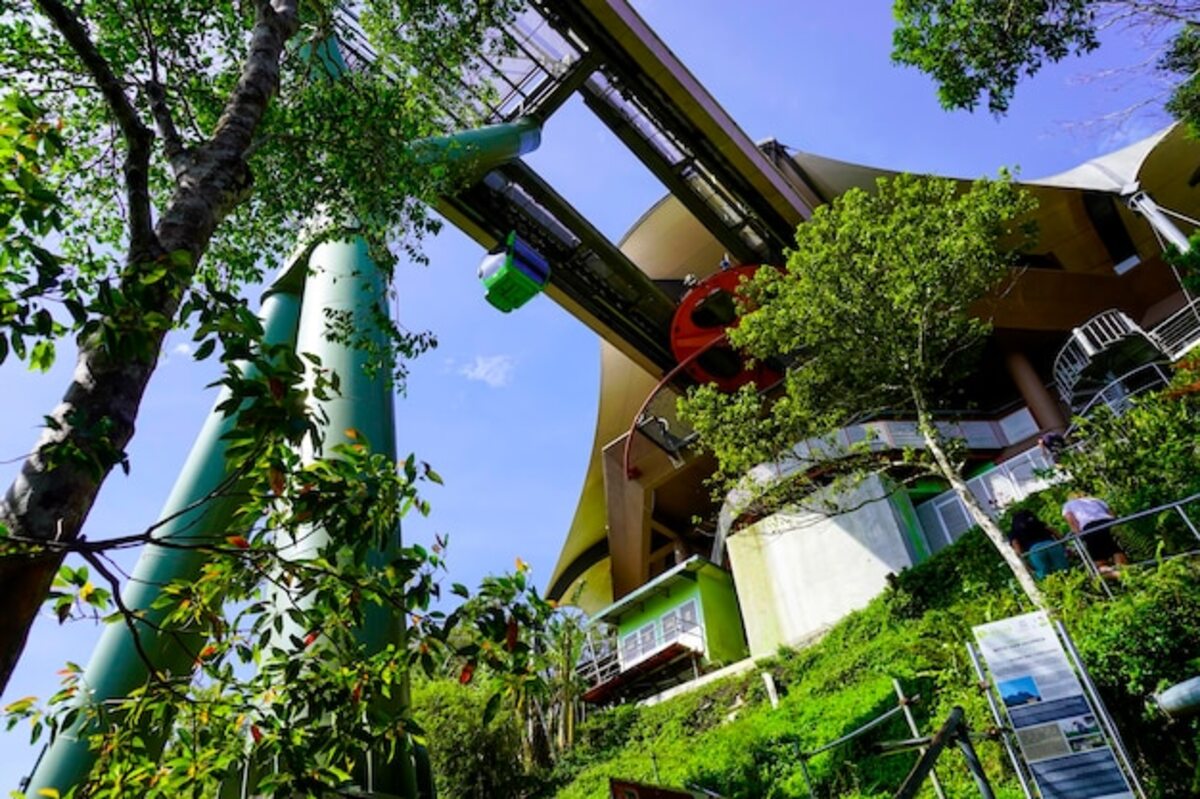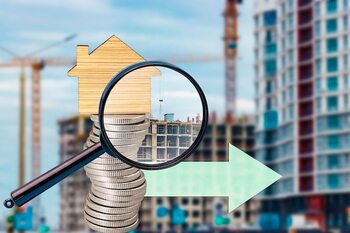The influence of sustainability on neighborhood value

Sustainability has become an essential pillar in the valuation of neighborhoods, impacting not only the environment but also property values and nearby services. The growing awareness of eco-friendly practices has led buyers to prioritize locations that promote sustainability. In this article, we will explore how this trend influences property appreciation and what aspects to consider when evaluating a neighborhood committed to the environment.
What is sustainability and why is it important for neighborhoods?
Sustainability refers to the ability to meet present needs without compromising the ability of future generations to meet their own needs. In the context of neighborhoods, this implies a holistic approach that encompasses everything from energy efficiency and responsible resource use to promoting green spaces and sustainable mobility. A sustainable neighborhood seeks to balance urban development with environmental preservation, creating an environment where both residents and nature can coexist in harmony. This philosophy not only helps to improve the quality of life for inhabitants but also fosters a stronger and more inclusive sense of community.
The importance of sustainability in neighborhoods lies in its direct impact on various aspects that affect residents and real estate value. Communities that adopt sustainable practices tend to offer services and amenities that promote a healthy lifestyle, such as parks, recreational areas, and efficient public transportation systems. These elements not only enhance the overall well-being of their inhabitants but also make such areas more attractive to potential buyers or renters. As the preference for living in environmentally committed places grows, it is likely that these features will increase the long-term value of the neighborhood, becoming a solid investment for those looking to acquire properties in sustainable areas.
2. How green infrastructure increases property value
Green infrastructure, which includes elements such as green roofs, vertical gardens, parks, and stormwater management systems, not only enhances the aesthetics of a neighborhood but also offers functional benefits that elevate its appeal. These features promote a healthier environment by reducing air pollution and providing recreational spaces for residents. By incorporating these aspects into urban design, a more livable and environmentally friendly community is created, which in turn attracts conscious buyers seeking a sustainable lifestyle.
In addition to the positive environmental impact, green infrastructure can transform the perception of property value in a neighborhood. Studies have shown that areas with abundant vegetation and access to green spaces tend to have higher prices in the real estate market. This is because buyers view these features as investments in quality of life; they are willing to pay more for properties near natural areas or equipped with sustainable technologies. Therefore, having strong green infrastructure not only contributes to community well-being but also directly translates into increased property values for the involved properties.
3. The role of public spaces in sustainable communities
Public spaces play a fundamental role in building sustainable communities, as they foster social interaction and promote healthy lifestyles. Parks, plazas, and recreational areas not only beautify the neighborhood but also act as green lungs that improve air quality and provide shelter for local biodiversity. In this sense, the planning of these spaces must be strategic; incorporating elements such as pedestrian pathways, bike lanes, and accessible recreational areas helps reduce dependence on cars and encourages more sustainable modes of transportation. This type of infrastructure not only enhances the well-being of residents but also increases the neighborhood's appeal to potential buyers.
Additionally, well-designed public spaces can become catalysts for local economic development. By providing places for people to gather, community markets and fairs become possible, creating opportunities for local entrepreneurs and strengthening the area's economy. The presence of these spaces can directly influence real estate values; a community with access to well-maintained recreational areas tends to attract young families and professionals seeking a friendly and dynamic environment. Therefore, when evaluating a neighborhood committed to sustainable practices, it is crucial to consider not only its green infrastructure but also how these public areas can enhance social cohesion and foster a sense of belonging among its residents.
4. Nearby services: How do eco-friendly stores affect neighborhood value?
Eco-friendly stores play a fundamental role in enhancing neighborhoods, as they not only offer sustainable products but also promote a more conscious and healthy lifestyle. The presence of these businesses can attract a clientele interested in responsible practices, which in turn can stimulate local development and improve the economic opportunities of the area. This creates a positive effect on the neighborhood, as residents value the convenience of having access to organic and sustainable products close to their homes, which directly influences the overall perception of the place.
Additionally, eco-friendly stores are often accompanied by other sustainable services, such as local farmers' markets or community centers focused on environmental education. This synergy not only enhances the quality of life for residents by providing healthy and accessible options but also contributes to the increase in real estate value. A neighborhood with a variety of commercial options and sustainability-related services tends to be more attractive to potential buyers who seek environments that reflect their personal values. Consequently, this translates into properties with higher demand and higher prices.
5. The influence of sustainable transport on real estate value.
The relationship between sustainable transportation and real estate appreciation has become increasingly evident in recent decades. Neighborhoods that offer eco-friendly transportation options, such as efficient public transportation systems, proper bike lanes, and pedestrian accessibility, tend to be more attractive to buyers. This is because good access to transportation not only facilitates daily mobility but also reduces dependence on private vehicles, resulting in lower transportation costs and a positive environmental impact. Consequently, real estate developments located in areas with good sustainable transportation infrastructure often experience an increase in their value.
Additionally, urban policies that promote the use of sustainable transportation foster the creation of more cohesive and accessible communities. By integrating green spaces, pedestrian zones, and nearby services, these neighborhoods not only improve the quality of life for their residents but also attract new tenants and investors interested in sustainable properties. This phenomenon generates competition for investments in these areas, further driving up real estate prices. Therefore, when assessing the potential for appreciation in a neighborhood committed to sustainable transportation, it is essential to consider not only its current infrastructure but also future projections regarding urban development and local environmental policies.
6. Current trends in sustainable construction and their impact on the market
Current trends in sustainable construction are redefining how neighborhoods are developed and valued. The incorporation of eco-friendly materials, energy-efficient technologies, and designs that maximize natural light are just some of the practices gaining traction. These innovations not only reduce environmental impact but also create healthier and more pleasant living spaces. As builders adopt these sustainable approaches, properties constructed under these standards tend to have greater market appeal, thereby increasing their intrinsic value and, consequently, elevating the overall value of the neighborhood.
The impact of these trends goes beyond the increase in property values; it also transforms the perception of neighborhoods as desirable destinations. Today's buyers seek features such as green spaces, efficient waste management systems, and access to eco-friendly public transportation. These elements not only enhance the quality of life for residents but also foster a strong sense of community. Consequently, neighborhoods that integrate these sustainable principles not only attract new buyers willing to invest in their economic future but also set new standards for responsible and environmentally conscious urban development.
7. The importance of community initiatives to promote a sustainable lifestyle
Community initiatives play a fundamental role in promoting a sustainable lifestyle, as they create a sense of belonging and collaboration among residents. By fostering projects such as urban gardens, recycling groups, or cleanup days, a culture of shared responsibility toward the environment can be cultivated. These activities not only improve the quality of the physical environment but also strengthen social relationships among neighbors, which is crucial for increasing the appeal of the neighborhood. When residents work together to implement sustainable solutions, a positive impact is generated that can be reflected in property values.
Additionally, community initiatives can influence the external perception of the neighborhood, attracting new buyers interested in living in active areas committed to sustainability. Organizing local events that promote eco-friendly practices—such as organic product fairs or workshops on energy conservation—not only educates residents on how to lead more sustainable lives but also positions the neighborhood as a model to follow. This reputation can significantly raise interest and valuation of the area, allowing current homeowners to benefit from increased appreciation when selling their properties. In summary, community initiatives are key catalysts for fostering a sustainable lifestyle and enhancing the value of the neighborhood.
8. Environmental impact assessment: what buyers need to know
The evaluation of environmental impact is a crucial aspect that buyers must consider when contemplating the purchase of a property. This involves analyzing not only the physical characteristics of the neighborhood, such as infrastructure and green spaces, but also how development decisions have affected the local ecosystem. For example, areas that have implemented sustainable practices, such as waste management and the use of renewable energy, tend to enjoy a healthier and more attractive environment. Additionally, these initiatives can result in added value for properties by aligning with the growing consumer preferences for more eco-friendly lifestyles.
Buyers should be proactive in researching the environmental commitment of the neighborhood they are interested in. This includes evaluating local policies on conservation, accessibility to public transportation, and the availability of businesses that prioritize organic or sustainable products. Additionally, it is advisable to learn about community programs that encourage citizen participation in ecological activities. A comprehensive approach to assessing environmental impact not only helps make informed decisions about purchasing a home but also contributes to protecting the value of their long-term investment in a world where sustainability plays an increasingly relevant role.
9. Successful cases: examples of neighborhoods that have increased their value thanks to sustainability
The transformation of neighborhoods through sustainable initiatives has proven to be a key factor in the increase of property values. For example, in various cities, the implementation of green spaces and community parks has not only improved the quality of life for residents but has also attracted new buyers willing to pay more to live in areas that prioritize environmental health. Neighborhoods that have invested in green infrastructure, such as efficient recycling systems and accessible, sustainable public transportation, have seen a significant increase in their appeal to families and young professionals, which directly translates into a rise in housing prices.
Another highlighted case is the development of planned communities with environmental certifications, where the use of renewable energy and sustainable materials in construction is promoted. These initiatives not only reduce long-term costs for residents but also create a unique identity for the neighborhood. By attracting environmentally conscious buyers, these areas achieve a consistent and strong appreciation in the real estate market. The interconnection between sustainability and real estate appreciation is redefining what it means to live well, leading many neighborhoods towards a more prosperous and environmentally friendly future.
10. Tips for choosing a sustainable and valuable location to live
When choosing a sustainable and valuable location to live, it is essential to consider accessibility to services and ecological resources. Communities that offer easy access to public transportation, bike paths, and green spaces not only promote healthier lifestyles but also tend to maintain or increase their value over time. Researching local infrastructure and sustainability initiatives can provide clear insight into the neighborhood's commitment to the environment and its potential to grow in popularity among conscious buyers.
Another key aspect to evaluate is the presence of local policies that support sustainable practices. This includes incentives for green building, efficient recycling programs, and regulations that promote the responsible use of natural resources. A neighborhood where authorities are actively working towards sustainability will create a more attractive environment for both residents and investors. Analyzing community commitment to these practices can be decisive when deciding where to settle, thus ensuring a long-term investment in a home that respects and values our planet.



